Sea turtles and tortoises are often grouped under the same “turtle” name, but did you know they are quite different? These shelled creatures have a lot of similarities but are grouped differently into scientific categories. Today, we are going to explore the different worlds of sea turtles and tortoises and see what makes them both so special. Let’s discover the differences between a sea turtle and a tortoise.
Comparing a Sea turtle and a Tortoise
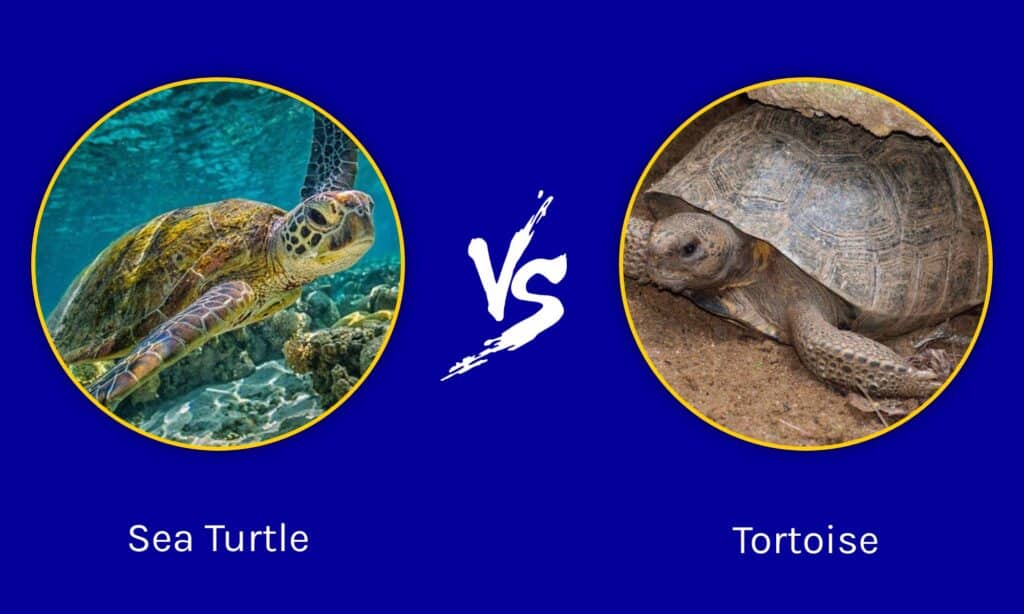
| Sea Turtle | Tortoise | |
|---|---|---|
| Taxonomy | Order: Testudines Family: Chelonioidea | Order: Testudines Family: Testudinidae |
| Habitat | Marine-dwelling reptiles. Found in oceans worldwide. | Deserts, islands, grasslands, mountains, and scrublands. |
| Shells | Flat and streamlined. Two categories: hard and leatherback. | Hard, usually domed. |
| Retraction | Can’t retract. | Can retract in to shell for protection. |
| Appendages | Large flippers are used for swimming and eating. | Large, strong legs. |
| Lifespan | Up to 50 years. | Longest lived animal in the world. Can live to over 250 years old. |
The 6 main differences between a sea turtle and a tortoise
The main differences between a sea turtle and a tortoise are that sea turtles are aquatic, have streamlined shells, and have physical adaptions for life in the water. Tortoises are terrestrial, have domed shells, and are suited to life on land.
Language can often be tricky, especially around animals. In common language, people refer to “turtles” as a group that includes any reptile with a large, rounded shell. Often, this group includes sea turtles, land turtles (box turtles), tortoises, and more. In the scientific categories, however, there is a bit more clarity.
All turtles belong to the order of reptiles Testudines. Within that order, they are categorized primarily by family, which makes things easy. Sea turtles belong to the superfamily Chelonioidea, of which there are three subfamilies that contain all seven species of sea turtle around the world. Tortoises are members of the superfamily Testudinoidea (which includes pond turtles, Asian turtles, and tortoises), but have their own smaller category of family, Testudinidae, where all 49 species of tortoise can be found.
Although the naming can be tough, knowing the difference between sea turtles and tortoises isn’t. Sea turtles are named so because of the habitat they prefer. All sea turtles are aquatic and spend their lives in the oceans around the world. Tortoises are terrestrial and live in a variety of habitats all over the world.
Aside from their scientific grouping and habitat, these two reptiles vary in shell design, adaptations, and even lifespan. Let’s look at these differences in more detail below.
Sea Turtle vs Tortoise: Taxonomy
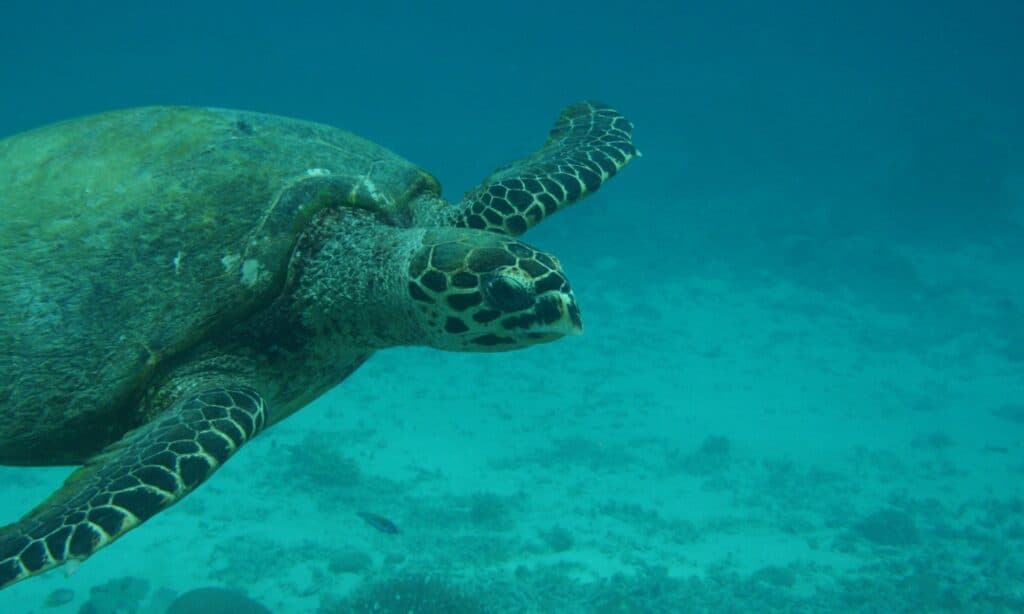
Sea turtles and tortoises both belong to the Testudines order but are separated out into their own distinct families.
©iStock.com/PERICE
All sea turtles belong to the Testudines order, along with tortoises, mud turtles, box turtles, and more. Members within this family are characterized as reptiles that have a shell that is mainly grown from their ribs. Within this order, there is a smaller superfamily known as Chelonioidea, where all seven species of sea turtle belong.
Tortoises are also members of the Testudines order. Working into a smaller category, tortoises also belong to the Testudinidae family. Worldwide, there are 49 species of tortoise that belong to the family.
Sea Turtle vs Tortoise: Habitat
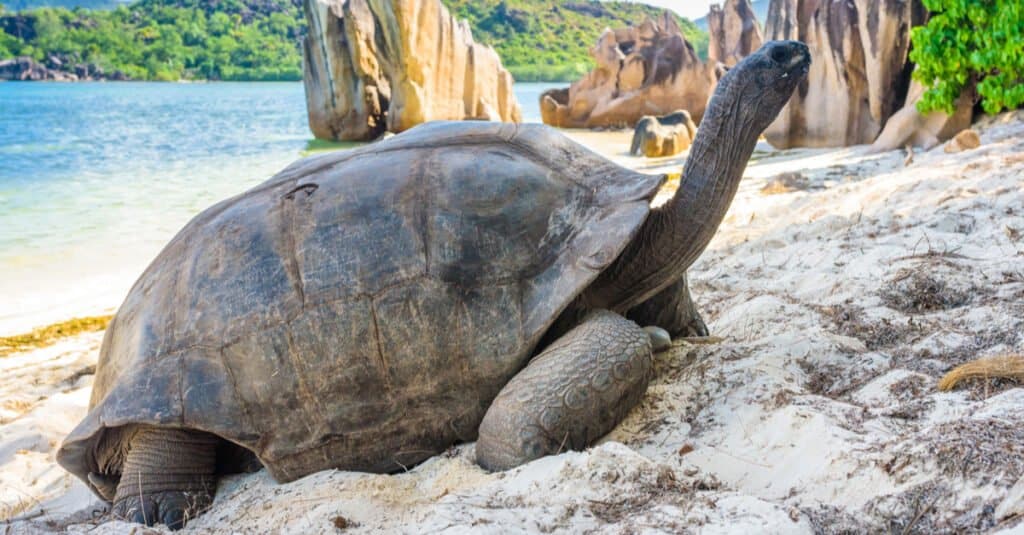
Tortoises live on land.
©Jan Bures/Shutterstock.com
One of, if not the primary, differences between sea turtles and tortoises is their habitat. Sea turtles are totally aquatic and spend most of their lives in the ocean. They will occasionally come ashore to lay their eggs on a beach, but other than that, these reptiles are always swimming. Sea turtles generally prefer ocean habitats near continental shelves, but also like seaweed forests and coral reefs.
Tortoises are much more varied than sea turtles in regards to habitat. These terrestrial reptiles are pretty hardy creatures and have made almost every habitat on earth a potential home. Generally, tortoises are most common in semiarid habitats of all kinds. Additionally, they can be found in grasslands, all sorts of forests, swamps, and more.
Sea Turtle vs Tortoise: Shells
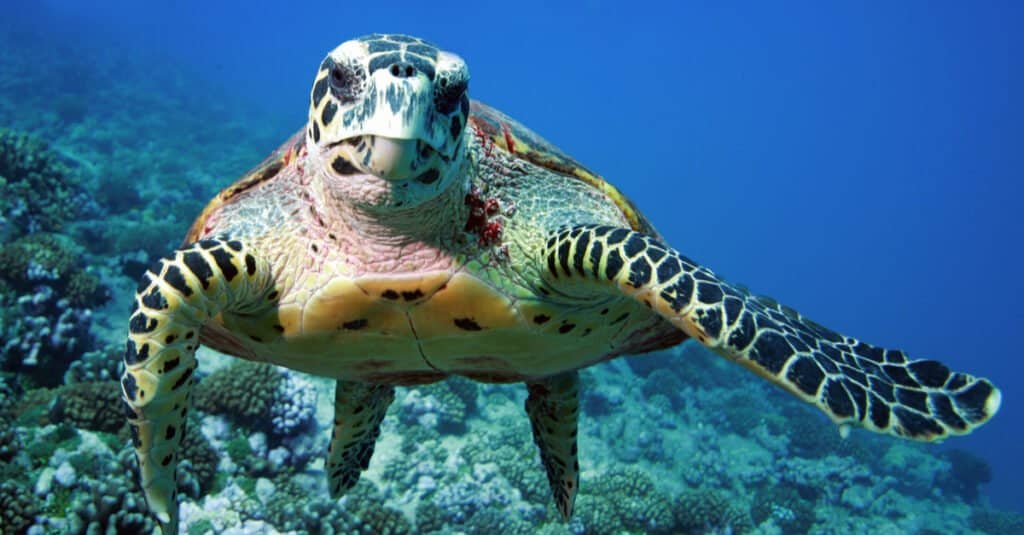
Sea turtles have slimmer shells for swimming in the water.
©Achimdiver/Shutterstock.com
The shells of sea turtles can be split into two categories: hard-shelled (cheloniid) and leathery-shelled (dermochelyid). Six of the seven species of sea turtle have hard shells, with only the leatherback sea turtle having a leathery shell. Additionally, sea turtles have flat, streamlined shells that help them swim with less drag in the water.
Tortoises generally have thicker, heavier, and more domed shells than sea turtles. Since speed and water agility aren’t all that important for a tortoise, they have evolved to have domed shells that provide more protection, especially when compared to the slim shells of the sea turtle.
Sea Turtle vs Tortoise: Retraction
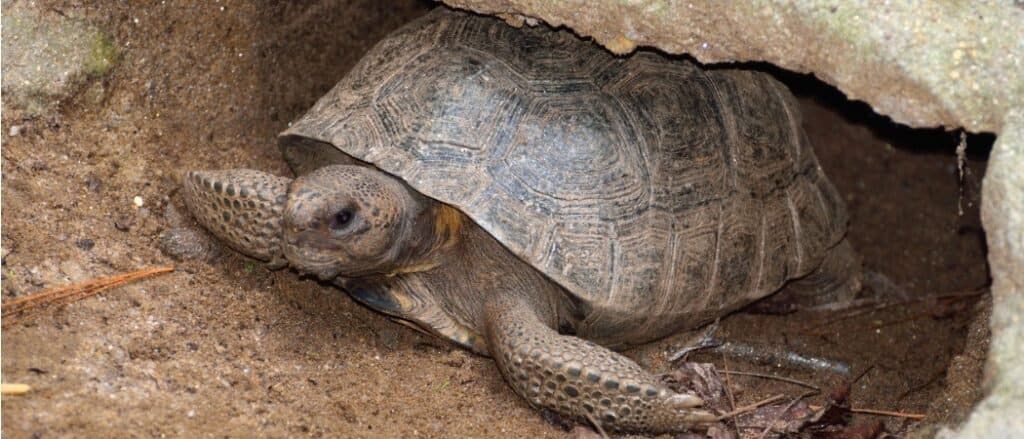
Sea turtles can’t retract into their shells, while tortoises can.
©iStock.com/Paulbr
Despite being a food source for a variety of creatures (primarily sharks), sea turtles don’t have the ability to retract their bodies into their shells. Still, when attacked, their shells provide some amount of protection across their most vital organs.
Most species of tortoise have the ability to retract into their shells. When threatened, they are able to retract their head and neck directly back into their shells for protection. Unlike some species of box turtle, however, tortoises can’t close off their shell from the front or back to provide total protection from any attacker.
Sea Turtle vs Tortoise: Appendages
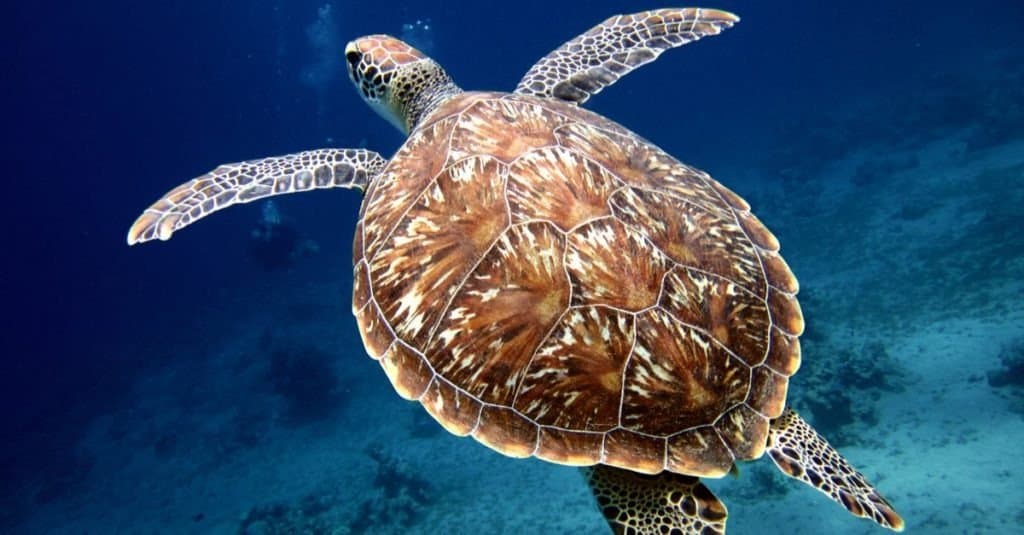
Sea turtles use their flippers for eating and swimming.
©Kjeld Friis/Shutterstock.com
Since sea turtles live their lives in the water, they have adapted long, strong flippers on their front and back legs. These flippers are used to propel them through the water even better than a webbed foot would be able to. Additionally, sea turtles can hold food and swipe things with their flippers.
Tortoises are terrestrial creatures and have front and back legs to walk with. Many island species of tortoise have extremely strong legs that closely resemble that of an elephant. Tortoises that have evolved on island habitats often grow to immense sizes and need strong legs to support bodies than can sometimes reach over 500 lbs.
Sea Turtle vs Tortoise: Lifespan

Tortoises are the longest-lived land animals on earth.
©iStock.com/GoDogPhoto
As a general rule, turtles live for a long time. They have slow metabolisms, and their shell protects them from potential danger. Sea turtles often live to 60-80 years old but can likely live longer.
Tortoises are currently recognized as the longest-lived land animals in the entire world! Some species, like the famous Galapagos tortoise, regularly live to over 150 years old. The longest living individual was an Aldabra giant tortoise named Adwaita that lived to an estimated 255 years old.
The photo featured at the top of this post is © iStock.com/YasserBadr_Beenthere
Thank you for reading! Have some feedback for us? Contact the AZ Animals editorial team.






